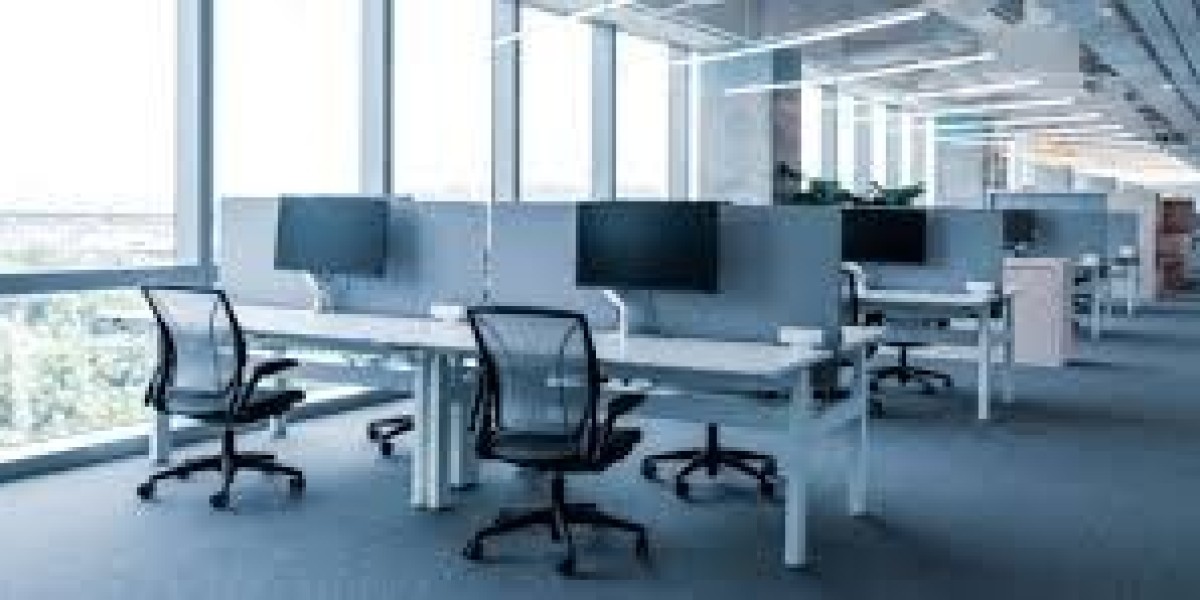In today’s fast-paced and demanding work culture, productivity is a priority for organizations and professionals alike. While digital tools and effective workflows play a major role, the physical environment in which we work is just as critical. Subtle yet powerful elements like lighting and furniture can significantly impact an individual's mood, efficiency, and overall output. As more businesses invest in modern workspaces, understanding the relationship between the physical office setup and productivity becomes essential.
Lighting and furniture are not just about aesthetics—they influence cognitive functions, mental well-being, and physical health. If the lighting is too dim or too harsh, or if the furniture lacks ergonomic design, it can lead to fatigue, stress, and even chronic health issues over time. Conversely, a well-lit, comfortably furnished workspace can promote alertness, creativity, and sustained focus throughout the workday.
The Psychology of Light in Workspaces
Lighting has a profound psychological effect on the human brain. Natural light is widely regarded as the most beneficial form of illumination in work settings. It regulates circadian rhythms, which control our sleep-wake cycles, helping people stay more alert during the day and rest better at night. Offices with large windows or skylights often report higher employee satisfaction and performance levels.
On the other hand, artificial lighting—when poorly planned—can produce unwanted consequences. Overhead fluorescent lights, for example, are notorious for causing eye strain and headaches. Excessively bright lights can create glare on computer screens, forcing employees to squint or adjust their posture awkwardly, leading to discomfort. In contrast, dim lighting can induce drowsiness and reduce mental sharpness.
The most productive environments typically incorporate adjustable lighting, allowing individuals to tailor their workspace to their needs. Task lighting, such as desk lamps with adjustable brightness, can be extremely effective for detail-oriented work. Balancing cool and warm light tones depending on the time of day also creates a more natural and welcoming ambiance, which directly affects energy and mood.
Ergonomics: The Furniture Factor
Furniture, particularly office chairs and desks, plays a direct role in determining how comfortably and efficiently employees can carry out their daily tasks. Ergonomic design is not a luxury but a necessity in modern workplaces. Chairs that support the natural curve of the spine, desks that allow for proper monitor height, and adjustable elements that accommodate different body types are essential in preventing physical strain.
The concept of ergonomics goes beyond mere comfort—it ensures health and longevity in a professional setting. Poorly designed furniture can lead to neck pain, back issues, and repetitive stress injuries like carpal tunnel syndrome. Over time, these physical ailments can reduce productivity, increase absenteeism, and result in long-term healthcare costs for companies.
Office layouts also matter. The strategic placement of furniture to encourage movement—such as standing desks, collaborative zones, or break-out areas—can foster creativity and communication among teams. A well-designed environment encourages natural flow and interaction, essential traits for modern agile workforces.
Office Furniture Trends in Urban Centers
As work culture continues to evolve, many urban centers are seeing a transformation in office design. Cities like Karachi, with growing commercial sectors, are experiencing a rise in demand for modern and ergonomic office setups. The term office furniture Karachi is no longer about traditional wooden desks and leather chairs; it's about smart furniture that aligns with both aesthetics and performance.
Businesses are increasingly turning to suppliers who offer flexible and modular furniture solutions that support hybrid work models. These include sit-stand desks, ergonomic chairs, foldable partitions, and acoustic furniture designed to minimize noise distractions. The emphasis is now on creating spaces that cater to a variety of work styles—whether it’s quiet focus, creative brainstorming, or formal meetings.
Incorporating regional preferences and climate conditions is also key. In warmer climates like Karachi, materials that allow breathability and ease of maintenance are favored. Additionally, the integration of local craftsmanship with modern ergonomic requirements adds cultural richness to functional design.
How Lighting Complements Furniture Design
While lighting and furniture are often considered separately in office planning, they function best as complementary elements. For instance, a beautifully crafted desk may lose its appeal and functionality if it is placed under glaring ceiling lights that cause eye discomfort. Similarly, a reading nook with perfect lighting becomes less inviting if the chair lacks proper lumbar support.
Designers now approach office interiors as holistic ecosystems. Furniture pieces are selected not only for their design and comfort but also for how well they interact with lighting plans. This might mean placing desks near windows to take advantage of daylight or installing pendant lights over collaborative tables to create focal points that encourage team engagement.
Smart lighting systems are becoming increasingly popular. These systems adjust brightness levels based on the time of day or occupancy, ensuring energy efficiency and consistent lighting quality. When matched with adaptive furniture, the result is a dynamic workspace that responds to the needs of its users rather than enforcing a rigid layout.
Productivity and Well-being Go Hand in Hand
The modern worker spends an average of 8 to 10 hours at a desk. Over time, even small discomforts can compound into major distractions or health concerns. This is why productivity should be viewed through the lens of well-being. A physically comfortable worker is more likely to be mentally engaged, emotionally balanced, and committed to their tasks.
Organizations that prioritize quality lighting and ergonomic furniture often report lower turnover rates and higher job satisfaction. Employees appreciate when their comfort is taken seriously, and in return, they contribute more effectively to the organization’s goals. Companies that overlook these environmental details risk losing valuable productivity to preventable factors.
Moreover, investing in high-quality office infrastructure signals a forward-thinking culture. It shows that the organization values both performance and people, creating a workplace culture that attracts top talent and promotes loyalty.
The Future of Work Environments
The global shift toward flexible work arrangements and hybrid office models has brought new considerations to the forefront. Today’s offices must cater not only to those working full-time on-site but also to remote and part-time staff. This means designing spaces that are adaptable and multi-functional, with furniture and lighting that can quickly transition between solo tasks and group activities.
Technology plays a vital role here. Wireless charging stations built into desks, sensor-based lighting that turns on when someone enters the room, and mobile furniture that can be rearranged with ease—all of these innovations are shaping the future of productivity. Smart office solutions are no longer reserved for large corporations; even small businesses are beginning to see their value.
Looking ahead, sustainability will also influence design decisions. Eco-friendly lighting solutions, recycled furniture materials, and energy-efficient systems will become the norm. As businesses strive to meet environmental standards, the choices they make in lighting and furniture will reflect not just on productivity, but on their values and social responsibility.
Conclusion
In conclusion, the intersection of lighting and furniture is a vital determinant of productivity in modern workspaces. From the psychological benefits of natural light to the physical advantages of ergonomic furniture, every element of office design contributes to employee performance and well-being. As urban centers like Karachi continue to modernize their commercial infrastructure, the demand for thoughtfully designed work environments will only grow.









